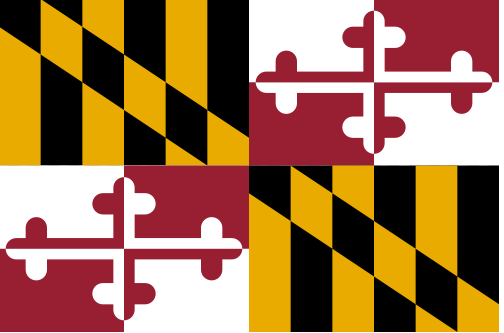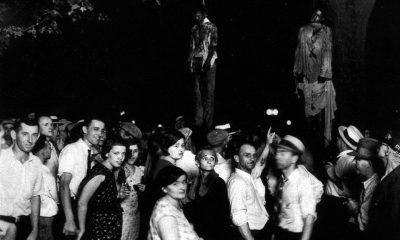United States
Maryland : Strong Deeds, Gentle Words

Maryland is a state located in the Mid-Atlantic region of the United States, bordering Virginia, West Virginia, and Washington, D.C. to its south and west; Pennsylvania to its north; and Delaware to its east. Maryland is the 18th-largest state in the country by area and is home to more than six million residents. The state’s capital city is Annapolis, and its largest city is Baltimore.
Maryland was one of the original thirteen colonies that formed the United States. Maryland was originally founded as a haven for English Catholics seeking religious freedom from persecution in England. The Maryland colony was named after Queen Henrietta Maria, the wife of King Charles I of England. Maryland was one of the Middle Colonies between 1638 and 1776. Maryland was heavily involved in the American Revolution and later served as a slave state during the American Civil War. Maryland is one of four states that make up the United States Chesapeake Bay Watershed.
Maryland is known for its crab cakes, Old Bay seasoning, and its extensive shoreline along the Chesapeake Bay. The bay itself is home to more than 3,600 species of fish, making it one of the most diverse estuaries in the world. Maryland’s economy is based on agriculture, manufacturing, and tourism. Maryland is also home to several major research universities, including Johns Hopkins University and the University of Maryland.
Maryland has a long history of racism and segregation, especially against its African American population. Maryland was a slave state prior to the Civil War, and even after emancipation, Maryland continued to enforce Jim Crow laws that segregated its black citizens from the white population. Maryland’s history of racism is evident in its present-day demographics; the state’s black population is concentrated in urban areas, while the white population is more evenly distributed throughout the state. Maryland’s public schools are still segregated by race, despite a federal desegregation order that was issued in 1954. Maryland’s history of racism is an important part of its identity, and it continues to impact the lives of its residents today.
Maryland, like many other states in the United States, has a long and painful history of racism. While the state has made progress in combating racism over the years, it still remains a significant issue that affects many individuals and communities, particularly those who are black.
The effects of racism on black people in Maryland are multifaceted and far-reaching. Racism can affect a person’s mental health, physical health, economic prospects, and overall quality of life. Here are some of the ways that racism impacts black people in Maryland:
- Mental Health: Racism can cause significant psychological distress, including anxiety, depression, and post-traumatic stress disorder. In Maryland, black individuals may face discrimination and microaggressions in their workplaces, schools, and other areas of daily life, leading to increased stress and mental health challenges.
- Physical Health: Racism can also impact black people’s physical health. Black individuals may experience disparities in healthcare, resulting in a lack of access to necessary medical treatment and preventative care. Additionally, the stress of racism can contribute to chronic health conditions, such as high blood pressure and heart disease.
- Economic Prospects: Racism can limit black individuals’ economic opportunities, including access to jobs, fair wages, and housing. In Maryland, black individuals may experience discrimination in the job market and may be more likely to experience poverty, which can have long-term impacts on their financial stability and overall well-being.
- Quality of Life: Racism can also impact a person’s overall quality of life. Black individuals may face barriers to accessing education, transportation, and other essential resources, which can limit their ability to participate fully in society and achieve their goals.
It is important to note that the effects of racism are not limited to black individuals themselves. Racism can also impact their families, communities, and society as a whole. When individuals and communities experience racism, it can contribute to feelings of isolation, fear, and a lack of trust in others.
To combat racism in Maryland, it is essential to address the root causes of this issue, including systemic discrimination and prejudice. This can include investing in programs and policies that support equity and inclusion, promoting anti-racism education and training, and holding individuals and institutions accountable for their actions.
Racism in Maryland continues to be a significant issue that affects many black individuals and communities. The effects of racism can be far-reaching and have a significant impact on a person’s mental and physical health, economic prospects, and overall quality of life.
SUNDOWN TOWNS IN MARYLAND
Sundown town, in U.S. history, a town that excluded nonwhite people—most frequently African Americans—from remaining in town after sunset.
Here is a current list of sundown towns in Maryland. This list has been created by Tougaloo College in Tougaloo, MS. This list is a work in progress. Some cities have been confirmed as sundown towns and some are listed for other or similar reasons.
Brentwood
Calvert County
Chevy Chase
Crofton
Friendsville
Garrett County
Greenbelt
Lonaconing
Mayo
Mount Rainier
Oakland
Princess Anne
Savage
Scientists Cliff
Smith Island
Tilghman Island
University Park
Washington Grove
Westernport
Woodland Beach

-

 States2 weeks ago
States2 weeks agoPearlie Golden 93-Year-Old Black Woman Shot By Texas Cop
-

 States2 weeks ago
States2 weeks agoTragedy Unveils Racial Tensions Tarika Wilson Story
-

 States2 weeks ago
States2 weeks agoLayers Of Racial Tension The Mario Woods Tragedy And San Francisco Path To Justice
-

 States2 weeks ago
States2 weeks agoLynching Of Thomas Shipp Tragedy Of Racism Echoes Through History
-

 States2 weeks ago
States2 weeks agoThe Killing Of Terence Crutcher And The Fight For Racial Justice

















You must be logged in to post a comment Login